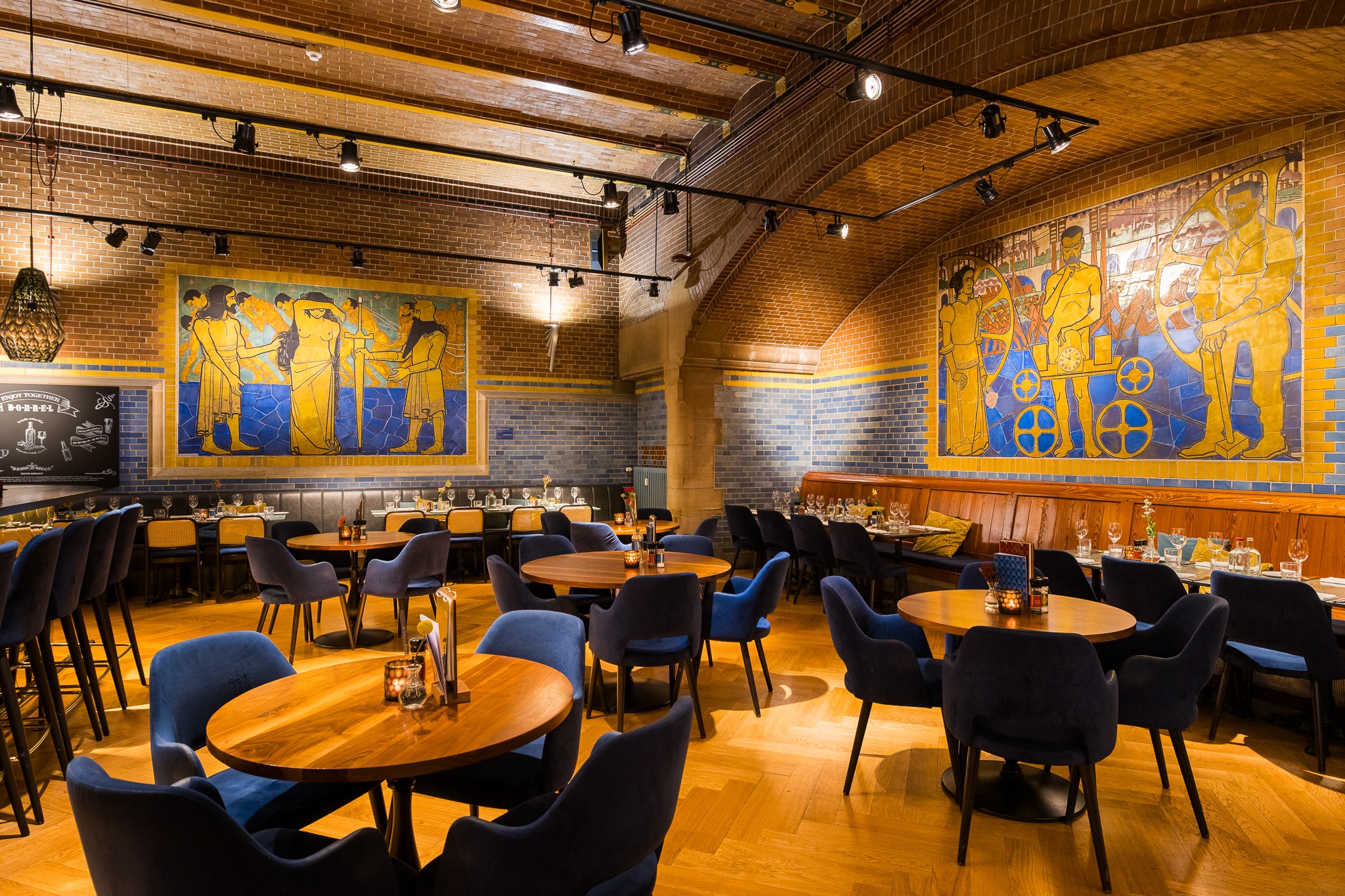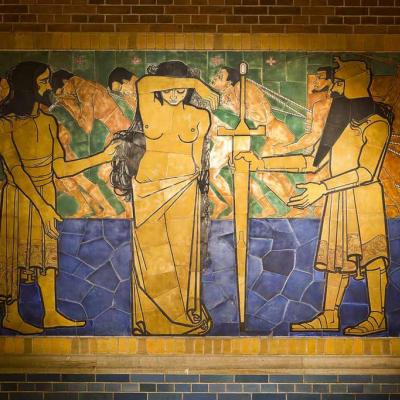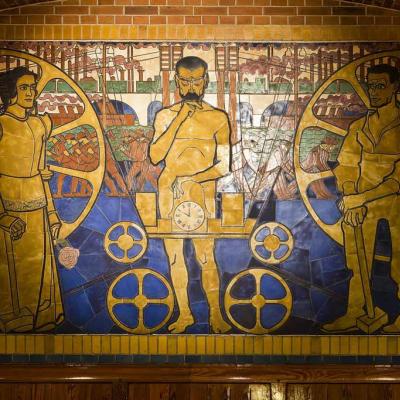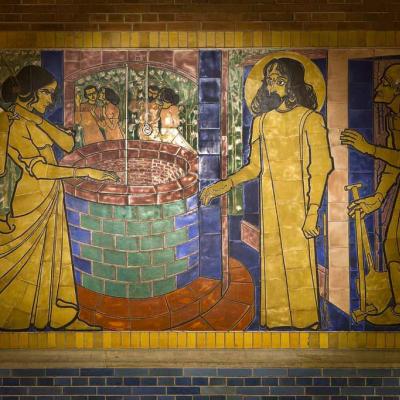THE MAGIC OF TOOROP'S TILE TABLEAUS IN BISTRO BERLAGE
When Berlage designed the Beurs van Berlage, a gem on the Damrak, he invited the crème de la crème of artists of his time. These masters, steeped in symbolism, did not just paint a picture; they invited us on a journey through form, line, and color.
Jan Toorop, a virtuoso who played with impressionism, symbolism to pointillism, shaped this journey in his tile tableaus. These artworks, once the backdrop for the dynamic world of stock traders, live on in the current Bistro, where they offer a window into a time when change was the only constant.

TILE TABLEAU 'PAST'
The first tableau takes you to a world where the trade in women was a bitter reality. The innocence and vulnerability of the woman, depicted by Toorop’s distinctive style, stands in stark contrast to the harsh world of slavery and power in the background. This tableau is a silent witness to a time when justice and humanity seemed lost.


TILE TABLEAU 'PRESENT'
Central in the Bistro stands the tableau that captures the present, where a woman and worker stand side by side, united in their pursuit of social participation and emancipation. Toorop interweaves symbols of modernity and political consciousness, a reminder that the right actions are not dictated by the clock. This piece is a celebration of progress, with a hint towards the uncertain future that binds us all.
TILE TABLEAU 'FUTURE'
The last tableau reveals Toorop’s vision of a future where spiritual and material worlds harmoniously blend. The meeting at Jacob’s Well, rich in symbolism, speaks of forgiveness, enlightenment, and hope. This image invites us to look beyond difficult times and rejoice in a future full of flourishing and balance.

